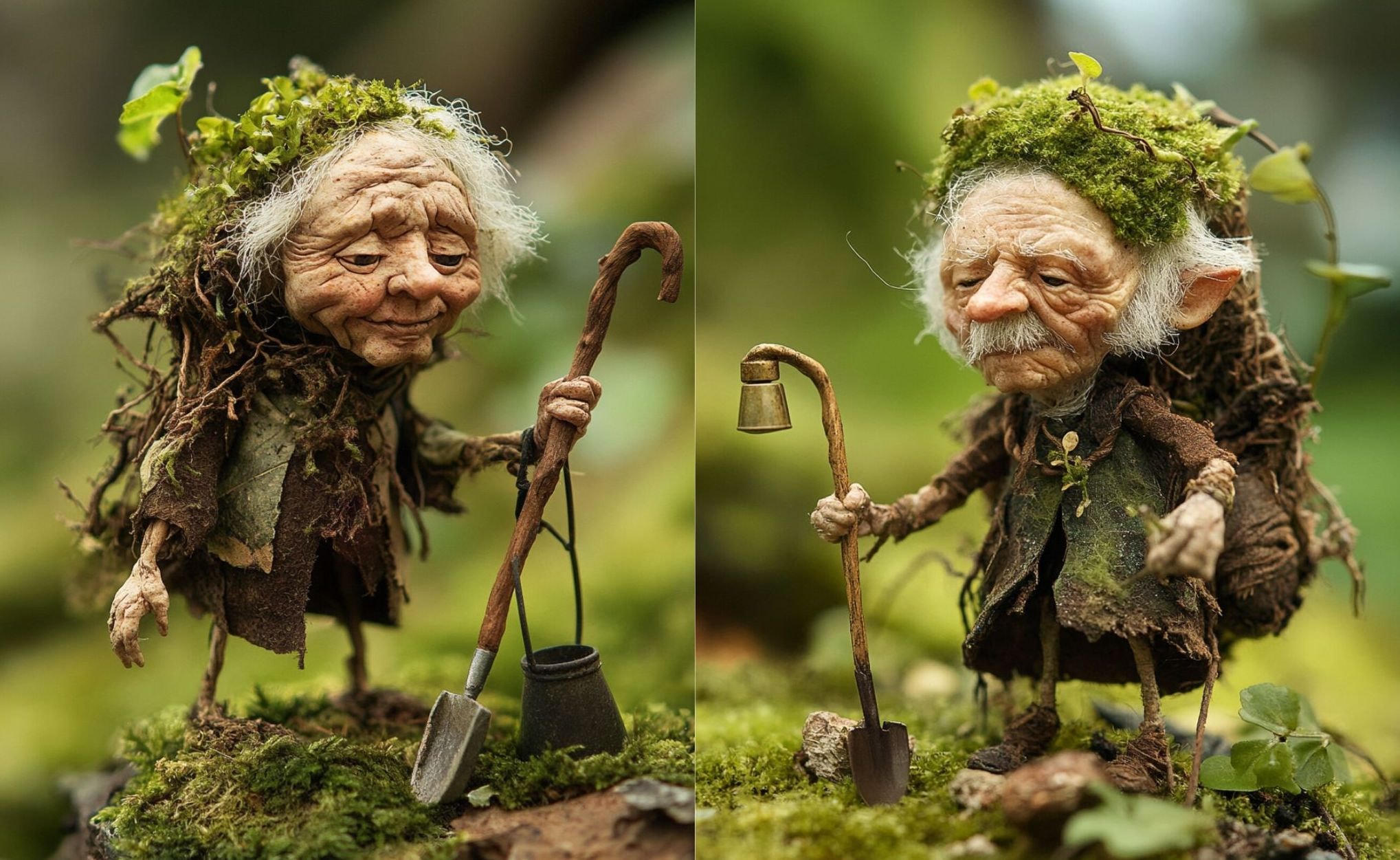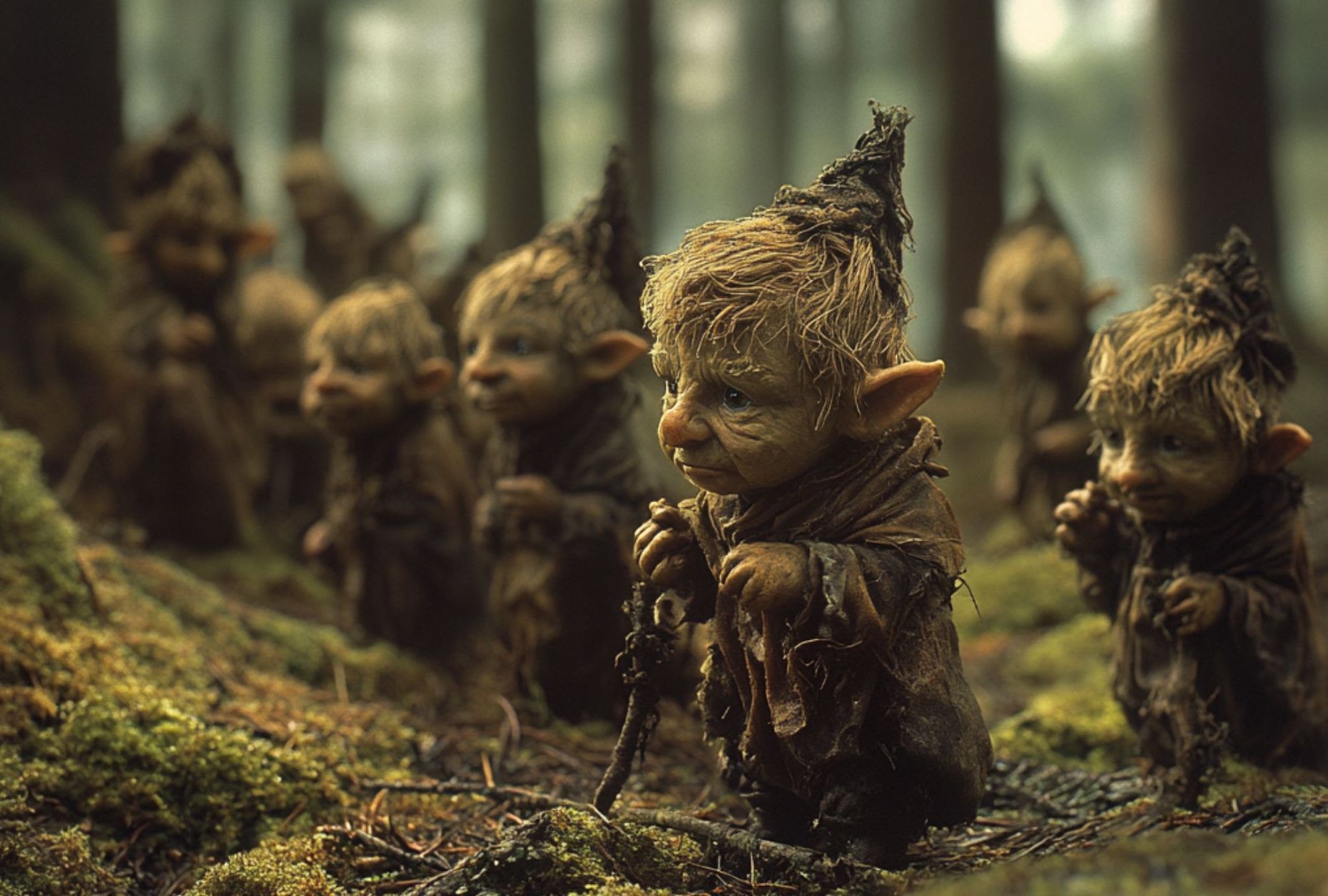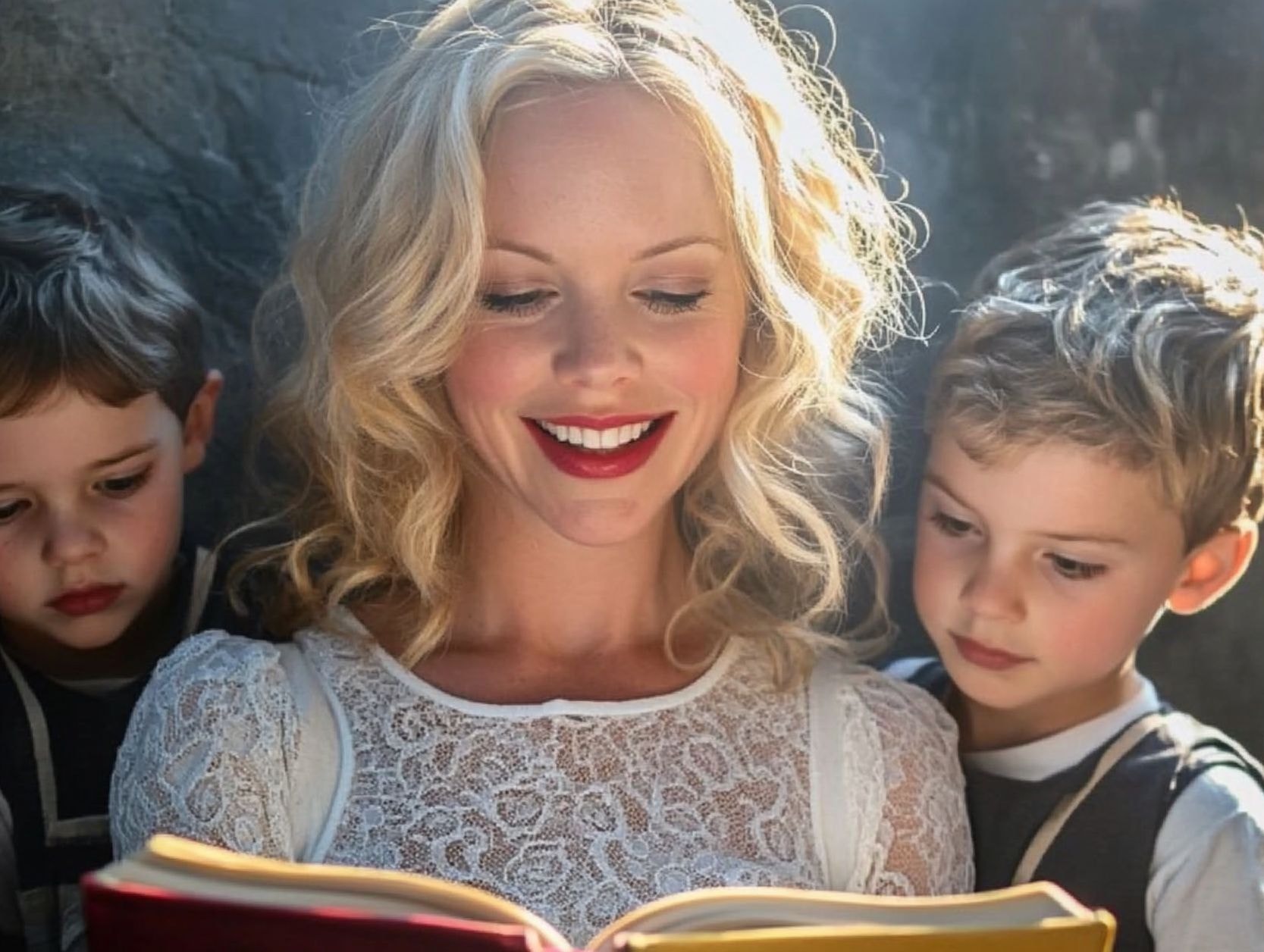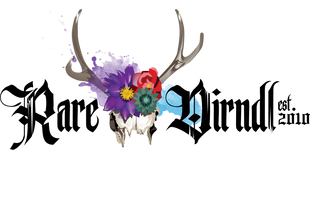Discovering the Enchantment of German Folklore: Myths and Creatures
As a self-confessed, millennial hard-core Harry Potter fan, I've always been fascinated by magic and fantasy. Recently, my 7-year-old, who used to be captivated by prehistoric creatures and dinosaurs, has begun showing a keen interest in gods, goddesses, mythical creatures, and cryptids. Watching that spark of wonder in their eyes has inspired me to dive deeper into the mysterious world of legends—especially those unique to Germany and the Alpine regions.

German folklore is a realm where ancient mysteries and timeless moral lessons converge—a landscape filled with enchanting figures, eerie creatures, and captivating tales passed down through generations. From the benevolent yet stern Frau Holle, who rewards diligence and punishes sloth, to the fearsome Krampus, the horned companion of St. Nicholas who reminds children of the consequences of misbehavior, these legends have not only shaped cultural identity but continue to inspire art, literature, and our modern imagination.
In this post, I invite you to join me on a personal journey into the enigmatic world of German folklore. Together, we'll explore a comprehensive list of some of the most iconic figures—from the mischievous mountain spirit Rübezahl and the seductive yet dangerous Nixe, to the mysterious beings like the Alp and Nachtalben that haunt our dreams. Each entry offers a glimpse into their origins, unique characteristics, and the symbolic roles they play within this rich tapestry of myth and magic.

So, whether you're a lifelong fan of fantasy like me or just curious about the legends that weave our cultural fabric, let's step into this world of legends and lore and rediscover the magic that has fascinated generations.
German Folklore: The Folklore Figures
Meet the colorful cast of characters that form the backbone of German folklore! From the ever-watchful, no-nonsense Frau Holle to the terrifying, chain-clanking Krampus, these legends offer a wild ride through a world where nature, magic, and morality collide.
Each figure—whether it's the mysterious allure of the Nixe, the playful mischief of the Wolpertinger, or the eerie presence of the Nachtalben—brings its own unique flavor to the tale. Buckle up and prepare to explore these timeless icons, whose stories have been captivating imaginations (and teaching a few hard lessons) for centuries.
Frau Holle

A beloved figure in German folklore, Frau Holle is both nurturing and strict. Often portrayed as a kindly, older woman who oversees the natural cycles of the seasons, she rewards the diligent and punishes the lazy, symbolizing the balance between labor and nature.
-
Overview: A maternal, transformative force linked to domestic work and winter.
-
Origins & Story: Rooted in pre-Christian goddess worship and popularized by the Brothers Grimm in her tale of the industrious girl and the indolent stepsister.
-
Key Traits: Depicted with white or silver hair, often seen with symbols like a feather bed or spinning tools, sometimes amid falling snow.
-
Cultural Significance: Represents the rewards of hard work, the cyclical nature of the seasons, and the interplay between human effort and natural forces.
Krampus: Punishes Naughty Children

Krampus, a mythical creature deeply rooted in contemporary celebrations and cultural heritage in southern Germany and Austria, is the dark, fearsome counterpart to Saint Nicholas, known for his role in punishing misbehaving children during the Christmas season. His terrifying appearance—complete with horns, shaggy fur, and a sack for abducting the wicked—serves as a grim reminder of the consequences of bad behavior.
-
Overview: A horned, demonic figure from Alpine folklore who punishes children who misbehave.
-
Origins & Mythology: Draws from pre-Christian Alpine traditions and was later integrated into Christian holiday customs as a counterbalance to St. Nicholas who rewards good behavior.
-
Key Traits: Characterized by twisted horns, a grotesque face with glowing eyes, cloven hooves, chains, and birch rods.
-
Cultural Significance: Acts as a moral enforcer during the festive season, embodying the duality of reward and punishment.
Rübezahl

Rübezahl is the enigmatic spirit of the Giant Mountains, known for his shape-shifting abilities and unpredictable nature. He can be both a benevolent guardian of the wilderness and a mischievous trickster, reflecting the complex relationship between humans and the natural world.
-
Overview: A mountain spirit embodying both protective and playful characteristics.
-
Origins & Legends: Emerges from Central European folklore with roots in pagan traditions and later mythological influences.
-
Key Traits: Varies in appearance from a wild, bearded mountain lord to a cunning trickster; known for his ability to change shape at will.
-
Cultural Significance: Symbolizes nature’s unpredictability, the balance between human activity and natural forces, and the mysteries of the wilderness.
Lorelei

Lorelei is one of the most evocative and enduring figures in German folklore—a mesmerizing siren of the Rhine River whose physical beauty astounding and song are as dangerous as they are enchanting. Often depicted as a beautiful woman with long, flowing hair, she sits atop a rocky outcrop along the Rhine, combing her hair and singing, her voice said to lure sailors to their doom. The legend of Lorelei intertwines nature’s allure with the perils of the unknown, symbolizing both the seductive power and hidden dangers of the natural world.
-
Overview: A legendary siren of the Rhine River, known for her enchanting yet perilous song that lures sailors to their fate.
-
Origins & Mythology: Rooted in pre-Christian Germanic beliefs and later popularized by poets such as Clemens Brentano and Heinrich Heine, Lorelei’s story has evolved into a rich symbol of both beauty and danger along one of Europe’s most storied rivers.
-
Key Traits:
-
Appearance: Typically portrayed as an alluring woman with long, golden or blonde hair, often shown seated on a high rock, sometimes combing her hair.
-
Behavior: Her haunting song is said to mesmerize sailors, causing them to lose control of their vessels and crash against treacherous rocks.
-
Ambiguity: Embodies the duality of beauty and peril—the irresistible allure of nature that conceals hidden dangers.
-
-
Cultural Significance:
-
Literary Influence: Lorelei’s legend has inspired countless poems, songs, and works of art, becoming a cornerstone of German Romanticism.
-
Symbolism: She represents both the enchanting beauty of the natural world and the ever-present threat lurking beneath its surface.
-
Tourism: The rock of Lorelei remains a popular tourist destination, drawing visitors who are captivated by the enduring mystery of the Rhine and its legends.
-
The Nixe: Water Spirits

The Nixe is a captivating water spirit, often depicted as a beautiful, mermaid-like figure whose alluring presence belies a dangerous nature. Dwelling in rivers, lakes, and streams, she embodies the dual qualities of water: life-giving beauty and hidden peril.
-
Overview: An enchanting yet treacherous water nymph from Germanic lore.
-
Origins & Mythology: Part of a broader tradition of water spirits found in Germanic and Norse mythology.
-
Key Traits: Typically portrayed as a stunning woman with flowing hair and aquatic features, sometimes with hints of a fishtail.
-
Cultural Significance: Represents the seductive yet unpredictable nature of water, highlighting both its nurturing and dangerous aspects.
Kobolds

Kobolds are small, mischievous spirits known for inhabiting households, mines, or even ships. 'Kobold' is a German word for a household spirit. Their unpredictable nature can bring both helpful boons and troublesome pranks, making them integral to everyday folklore and a way to explain inexplicable occurrences.
-
Overview: Small, shape-shifting beings that dwell in everyday spaces, from homes to mines.
-
Origins & Legends: Deeply embedded in Germanic folklore, often used to account for mysterious happenings.
-
Key Traits: Can be invisible or appear as impish, gnome-like figures; their behavior ranges from helpful to mischievous.
- Cultural Significance: Serve as reminders of the unseen forces at work in daily life and the importance of respect in domestic and communal spaces.
Tatzelwurm: Mythical Creature

The Tatzelwurm is a mysterious cryptid of the Alpine regions, described as a creature with a long, serpentine body and cat-like features. Sightings of this elusive being have sparked both fear and fascination, straddling the line between myth and reality.
-
Overview: An elusive, serpent-like creature with feline characteristics from the Bavarian Alps.
-
Origins & Sightings: Reported in numerous local legends and folk tales from Alpine regions, often without definitive evidence of its existence.
-
Key Traits: Noted for its long, snake-like body, short legs (or sometimes none), and a fearsome bite.
-
Cultural Significance: Embodies the mysterious and unexplored aspects of the wilderness, evoking both awe and trepidation.
Waldgeister and Waldmännchen: Supernatural Beings

The forest is a realm of magic and mystery, guarded by spirits known as Waldgeister and their smaller counterparts, Waldmännchen. These beings range from ethereal guardians to playful tricksters, reminding us that the woods hold secrets and sacred power.
-
Overview: Supernatural entities inhabiting the forest, serving as both protectors and mischievous inhabitants.
-
Origins & Mythology: Arise from traditions that venerate the hidden, mystical aspects of nature.
-
Key Traits: Waldgeister appear as ghostly, ethereal figures, while Waldmännchen are depicted as small, gnome-like beings.
-
Cultural Significance: Emphasize the sacred bond between humans and the natural world, and the need to respect the unseen forces within the forest.
Erdmännlein

Erdmännlein, or little earthmen, are folkloric creatures who dwell underground and are associated with mining and agricultural prosperity. Their stories often celebrate the rewards of hard work and the nurturing qualities of the earth, while also hinting at the mysterious life beneath our feet.
-
Overview: Gnome-like beings linked to the earth and its bountiful resources.
-
Origins & Legends: Feature in tales that highlight the importance of respect for the land and the rewards of labor.
-
Key Traits: Depicted as small, industrious figures who help with farming or mining, yet can be mischievous if treated poorly.
-
Cultural Significance: Symbolize the nurturing and mysterious aspects of the earth, underscoring the connection between human effort and natural abundance.
Wolpertinger

The Wolpertinger is perhaps one of the most whimsical figures in Bavarian folklore—a fantastical hybrid creature that combines features of various animals in a humorous, often absurd, manner. Its playful origins reflect the local sense of humor and creative storytelling.
-
Overview: A quirky, hybrid creature that blends parts from different animals, evoking both wonder and amusement.
-
Origins & Folklore: Born from Bavarian myth and often celebrated in humorous taxidermy displays and local tales.
-
Key Traits: Commonly features a rabbit’s body, deer antlers, bird wings, and other assorted animal parts, resulting in a fantastical and comical appearance.
-
Cultural Significance: Represents the playful side of folklore, offering a lighthearted counterpoint to the more serious and darker legends.
The Alp and Alpdrücken

The Alp is a nocturnal spirit associated with the unsettling phenomenon of sleep paralysis, often blamed for the oppressive sensation of a weight on one’s chest during nightmares. Originating from the middle ages, a period rich in German mythology and folklore, this folklore provided early explanations for terrifying nighttime experiences.
-
Overview: A shadowy, night-time entity that personifies the fear of sleep and nightmares.
-
Origins & Explanation: Emerged as a folkloric explanation for sleep paralysis and the sensation of being suffocated in one’s sleep.
-
Key Traits: Typically unseen, its presence is felt as an overwhelming pressure, sometimes accompanied by vivid, frightening dreams.
- Cultural Significance: Embodies deep-seated fears of the unknown and serves as a bridge between ancient superstition and modern experiences of sleep disturbances.
Nachtalben

Nachtalben, or night elves, are spectral beings of the darkness, known for their eerie influence over sleep and dreams. Their elusive, shadowy forms blur the line between the physical world and the realm of nightmares, representing the enduring mystery of the night.
-
Overview: Ethereal, ghost-like figures that disturb the quiet of the night with their unsettling presence.
-
Origins & Mythology: Rooted in ancient Germanic traditions, they embody the supernatural aspects of the dark hours.
-
Key Traits: Described as shadowy, elusive figures that appear in fleeting glimpses, often associated with disturbing dreams and the fear of darkness.
-
Cultural Significance: Reflect the timeless human fear of the night and the unknown, symbolizing the battle between light and darkness within our subconscious.
The Brothers Grimm and Their Collection
The Brothers Grimm, Jacob and Wilhelm, were pioneering German academics and linguists who dedicated themselves to preserving the rich tapestry of European folklore. Their seminal collection, Kinder- und Hausmärchen (Children’s and Household Tales), is a treasure trove of fairy tales that includes timeless classics like Cinderella, Snow White, and Hansel and Gretel. These stories, deeply rooted in Germanic mythology and medieval traditions, offer a window into the cultural and moral fabric of their time. The Grimm brothers’ work is celebrated for its portrayal of supernatural beings, moral lessons, and the intricate interplay between humanity and nature. Each tale, while unique, contributes to a broader understanding of the values and beliefs that shaped medieval Europe.
Grimm Fairy Tales

Grimm fairy tales, collected and published by the Brothers Grimm in the early 19th century, are a cornerstone of world literature. These stories, originating from Germany and other European countries, are renowned for their magical elements and often dark, violent themes. Characters like talking animals and supernatural creatures populate these tales, which are as much about moral lessons as they are about enchantment. Despite their sometimes grim content, these fairy tales impart teachings that remain relevant today, emphasizing virtues like honesty, bravery, and kindness. The Grimm brothers’ collection has been translated into numerous languages and adapted into countless forms, from books and films to stage productions, ensuring their place in the global cultural canon.
Themes and Symbolism in German Folklore

If you think your life is a rollercoaster, wait until you dive into German folklore—these legends are the OG real talk on nature, morality, and the uncanny dance between the everyday and the supernatural. Our ancestors weren’t messing around; they knew nature is as ruthless as it is beautiful, and they weren’t shy about showing you the consequences of stepping out of line. German folklore has inspired so many stories throughout history.
-
Nature as a Double-Edged Sword: German myths make it clear that nature isn’t all rainbows and butterflies. Whether it’s Frau Holle shaking out her feather bed to send snow tumbling down or Rübezahl flipping from benevolent guardian to mischievous trickster, these stories remind us that the wild isn’t to be trifled with. In these legends, Mother Nature doesn’t do half measures—she rewards your hard work and slaps you around if you slack off.
-
Morality with a Kick: Forget the sanitized “be good, get good” lessons—German folklore dishes out morality with a generous helping of sass. Take Krampus, for instance: he’s not just a spooky monster, he’s the ultimate enforcer who makes sure misbehaving kids (and by extension, adults) know exactly what happens when you don’t mind your manners. These tales are as much a warning as they are a celebration of accountability, delivered in a way that’s as brutal as it is unforgettable.

-
The Supernatural in the Everyday: Ever feel like there’s something strange lurking just around the corner? In the world of German legends, the supernatural isn’t hidden away—it’s woven right into the fabric of daily life. From the ghostly Waldgeister whispering through the forest to the eerie Nachtalben that turn your dreams into a battleground between light and shadow, these stories blur the lines between the normal and the otherworldly. They remind us that magic can be found in the most unexpected places, and sometimes, the weirdest parts of life are the most enchanting.
Modern Relevance of Ancient Myths

These age-old legends aren’t just relics tucked away in dusty tomes—they’re alive, vibrant, and more relevant today than ever. While these stories differ across cultures and time periods, their core themes remain relevant. In a world buzzing with modern technology and endless digital distractions, German folklore still speaks to us, reminding us that magic, mischief, and a healthy dose of moral accountability never go out of style. Whether it’s the gritty, no-nonsense lessons of Krampus or the wild, untamed spirit of Rübezahl, these stories continue to inspire everything from blockbuster films and bestselling fantasy novels to edgy street art and even our everyday conversations about life’s twists and turns. They serve as timeless guides, showing us that while the world around us may change, the fundamental truths about nature, humanity, and the supernatural remain eternally enchanting—and sometimes, just a little bit sassy.
Conclusion

And there you have it—a wild, enchanting journey through the kaleidoscopic world of German folklore. From the no-nonsense wisdom of Frau Holle to the terrifying antics of Krampus and the mysterious charm of Lorelei, these legends remind us that the magic of the past still has a lot to say about our present. In a world where technology often overshadows tradition, these timeless tales continue to inspire, challenge, and entertain, proving that even the oldest myths have a modern heartbeat.
As a fun twist, all the mesmerizing images featured in this post were brought to life with a little help from AI. Yes, technology and folklore might seem like an unlikely pair, but here we are—blending ancient magic with cutting-edge creativity to reimagine these legends in a whole new light. So, while the spirits of German folklore may have roamed these lands centuries ago, today they dance on our screens, reminding us that modern magic has its roots in the mysterious and the marvelous.
I'd love to hear which legend resonated with you the most—feel free to leave a comment or share your own myth-inspired musings. And here's a little secret: these captivating creatures have also inspired our upcoming collectaion for Rare DIrndl. Stay tuned as we bring these timeless legends into the contemporary spotlight.

Comments
Carolyn Crow said:
I love the Wolpertinger! We have a mythical creature in the States called the Jack-a-lope (a jack rabbit with antelope antlers) which the Wolpertinger reminds me of. But the Wolpertinger is far superior because it also has wings! Thank you for this enlightening and fascinating information and illustrations. I recenlty returned from a Rhine River cruise and learned about some of these creatures from our tour guides. I wished I could have remained in Germany!
Velma said:
I grew up hearing the Frau Holle stories from my late Aunt. She learned them from her parents and maternal grandmother, all of whom had emigrated from Germany in the 1890’s. To this day I recall those stories every time it snows.
Marion said:
Loved reading this. Having been born in Germany, this brought back so many memories of tales my mom read to me.